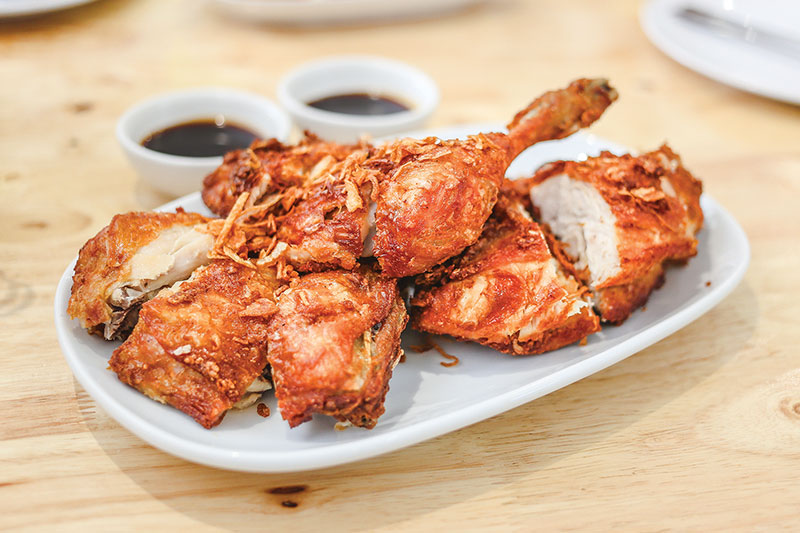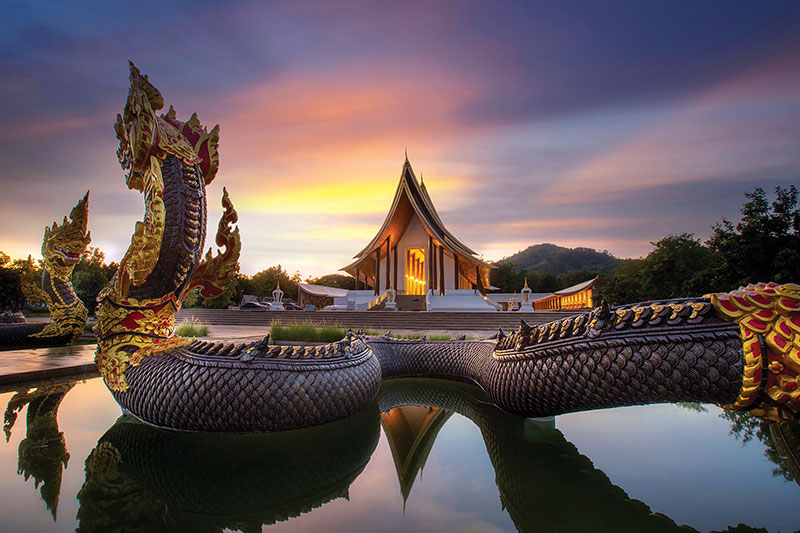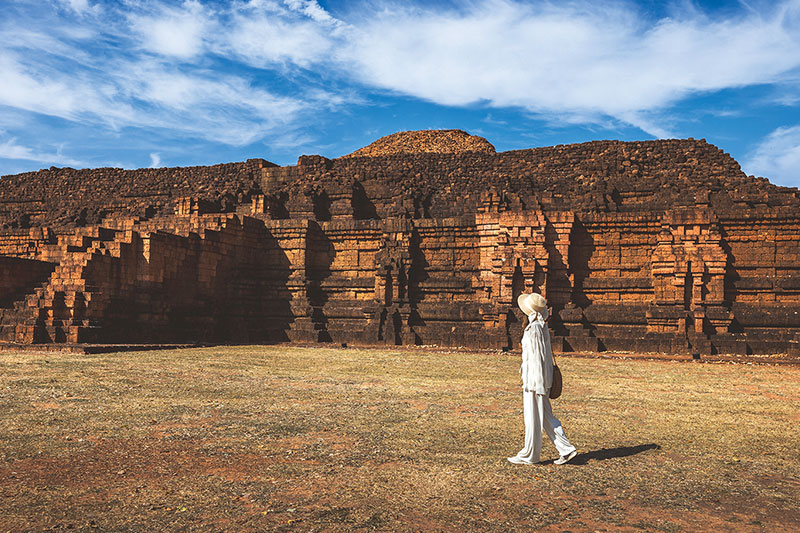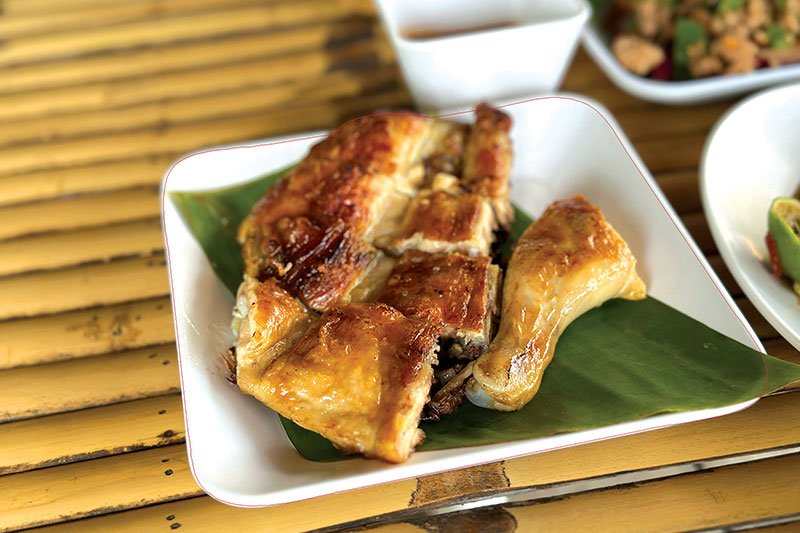
Phetchabun: Where History Meets Highlands
Journey into Thailand’s hidden heart, where mist-wrapped mountains rise above ancient shrines, and echoes of bygone empires still longer
Words: Phoowadon Duangmee Photos: Shutterstock
Many destinations in Thailand are world famous for their beaches or nightlife – but Phetchabun is not among tham. Tucked between Central and Northeast Thailand, this hidden gem, meaning “abundant land”, overflows with history, faith and breathtaking natural beauty. But a word of warning: travellers hunting bucket-list landmarks may be disappointed – this province deals in timeless experiences. An enchanting showcase of Thai culture and nature, Phetchabun tells its story in ancient ruins, mountaintop temples, national parks and close-knit communities.
Time Travelling in Ancient City
No journey to Phetchabun is complete without a visit to Si Thep Historical Park – an ancient city recognised as a UNESCO World Heritage Site in 2023. Here, visitors step back a thousand years as this once-bustling crossroads of civilisations rises in the imagination.
Thriving as a moated city between the 6th and 11th centuries, Si Thep is treasure trove of relics from the Dvaravati, Khmer and Lop buri empires. The visitor centre unfolds the city’s stories and secrets, but the real enchantment lies in exploring its ruins.
Highlights include Prang Song Phi Nong, twin towers enshrining sacred relics; the enigmatic Khao Khlang Nok, a vast stupa base for a once-mighty Buddhist monument; and Prang Si Thep, where Hinduism and Buddhism meet in stone.
Strolling alone among the ruins, with only cicadas and crunching gravel for company, visitors can almost hear the echoes of priests, pilgrims and traders who once gave life to this sacred city.
Faith in the Clouds
From Si Thep, the road climbs to the cool highlands of Khao Kho, a hill station known for its crisp air and lush, rolling landscape. Here spirituality takes dazzling form at Wat Phrathat Pha Son Kaeo. A giant cascade of five gleaming white Buddhas, arranged in ascending size on a single pedestal, watch over a fertile valley often wrapped in mist. Nearby, a lotus-shaped chedi shimmers with colourful mosaics of glass and ceramics, creating a cosmic kaleidoscope. Built as a symbol of mindfulness and purity, the temple also evokes a joyful work of art.
Elsewhere in the province, temples radiate a quieter spiritual power. Phetbura Buddhist Park is home to the world’s largest brass Buddha statue, casting its serenity across rice fields. Wat Dhammayan is wreathed in mythical naga serpents – a rich tapestry blending myth and reality. Meanwhile, Wat Sap Phairo clings to the hillside, rewarding visitors with jaw-dropping views of the province.

A Taste of Hat Yai
At first light, Hat Yai stirs to life. In humble Chinese-Thai eateries, baskets of dim sum steam gently – an everyday rite, not a weekend indulgence. Trolleys rattle past time-worn tables carrying bamboo baskets filled with classics like Shrimp Har Gow, Char Siu Bao, Salted Egg Buns, and hearty bowls of Jok Khai Yiaw Ma (Century Egg Porridge).
Coffee here is kopi – dark, potent and laced with condensed milk. It’s sipped on plastic stools, fuelling morning chatter as friends catch up and locals read newspapers. This daily ritual is the heartbeat of the city.
Then there’s Hat Yai’s famous fried chicken, known locally as Niaw Kai. Golden and peppery, crowned with crispy shallots and served with sticky rice and a tangy dipping sauce in a banana leaf wrap, it’s a must-try street-food staple found at roadside grills and bustling markets.


Mountains, Mist, and National Parks
Phetchabun matches thrilling heritage with awe-inspiring natural beauty.
Known as Thailand’s little Switzerland for its chilly peaks rising above seas of mist, Khao Kho attracts weekend visitors during the cool season (October to December). Sunrise seekers head to Khao Takhian Ngo Viewpoint, where golden light spills over valleys sunk in rolling clouds.
For trekking adventures, Nam Nao National Park offers 960 square kilometres of wilderness pine forest, grasslands, and rugged mountains dotted with hidden caves. In winter, a white frost cloaks the lush vegetation, while orchids bloom along the trails. Deer, macaques and even wild elephants roam through the depths of its forests.
Phetchabun is also a geological wonderland, its landscape shaped by global tectonic upheaval over millions of years. The dramatic Nam Nao Canyon, carved 200 million years ago as the supercontinent Pangaea broke apart, rises majestically in the east of the park. Nearby, the Loei Dun Potholes are an otherworldly sight – cylindrical sandstone depressions sculpted by swirling currents over the millennia.
At Si Dit Waterfall, visitors can plunge into natural pools and explore its communist-era backstory, preserved in the water-powered rice mill. Further downstream, the Kaeng Bang Rachan Rapids teem with rare freshwater jellyfish while attracting blooms of thirsty butterflies.
Beyond its natural, historical and spiritual treasures, Phetchabun also sheds light on a conflict that helped shape the nation we know today.
Phra Tamnak Khao Kho Palace and the Khao Kho Palace and the Khao Kho Sacrifice Memorial stand as reminders of the province’s role in Thailand’s battle against communist insurgency – a reminder that today’s serenity is built on past struggles.

Rooted in the Land
At its heart, Phetchabun remains an agricultural province, its orchards, fields and markets overflowing with shogun oranges, crisp cabbages and mulberries. Visitors can join in farm activities – fishing, weaving or fruit-picking – and connect with communities whose lives remain closely tied to the land.
Local museums further enrich the journey. The Phetchabun Intrachai Archaeological Hall displays artefacts unearthed at Si Thep, while the Lomsak Museum explores Thai-Lom culture through costumes, tools and everyday objects.
What makes Phetchabun worth visiting is not a single landmark, but its contrasts: ancient moated cities beside glittering modern temples, mist-wrapped mountains rising over sun-baked canyons, sacred monuments alongside war memorials. Together they weave a portrait of a province that endures, evolves and continues to inspire.

A Taste of Phetchabun
Phetchabun flavours are bold and vibrant – spicy, savoury and sour with a rich and lingering umami. The culinary star is Wichian Buri’s grilled chicken, marinated overnight in tamarind, garlic, chilli, sugar and salt, then grilled over an open flame until smoky and tender.

Planning a Visit
Phetchabun is five to six hours by car from Bangkok. Accommodation ranges from rustic homestays to boutique resorts in Khao Kho. The cool season (November to February) is the most popular time to visit, though each season offers its own charms – from lush monsoon waterfalls to fields of wildflowers in summer.
